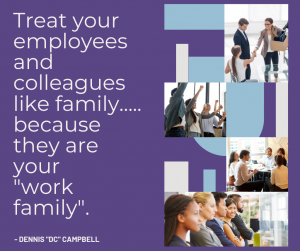How Would You Describe the Culture In Your Organization?
Did you know? Alphabet (GOOGL), the parent of Google, is well known for its employee-friendly organizational culture. It defines itself as unconventional and offers perks such as telecommuting, flextime, tuition reimbursement, free employee lunches, and on-site doctors. At its corporate headquarters in Mountain View, Calif., the company offers on-site services such as oil changes, car washes, massages, fitness classes, and a hairstylist. Its culture helped it to consistently earn a high ranking on Fortune magazine’s list of “100 Best Companies to Work For.”
Definition of Culture
“Culture” comes from the Latin word for “belonging together.” The organizational culture is a set of shared values, beliefs, and behaviors that helps you to get along well with your colleagues. It’s how people feel about their job and the organization itself. In this article, we’ll talk about organizational culture, how it develops over time and its impact on your work experience.
Understanding Organizational Culture
Understanding organizational culture can be a tricky thing. It’s not one single definition, but rather a collection of different ideas and beliefs that people have about the way they work together. For example, one person might believe that everyone in their department should do everything on their own time, while another believes that taking turns is important for team cohesion and productivity.
Organizational culture refers to how employees interact as well as what they think about their jobs—how they think about themselves within their organization (for example if someone has been promoted from an entry-level position), where they see themselves fitting in within this organization (if someone likes being at the top or bottom), how often people communicate with each other outside of normal business hours or during lunch breaks etc.
Elements of Organizational Culture
Organizational cultures are complex and dynamic, but there are some key elements that can be identified.
- Values
- Beliefs
- Assumptions
An organization’s culture will likely contain some combination of these three things. Values represent core principles that guide how an organization behaves in its day-to-day operations; beliefs describe what it believes to be true or false about the world (for example organizations may believe that hard work is important); assumptions form a framework for how an organization operates internally (for example: if you’re going to run a company full-time then you need more employees than just yourself).
These three things all have an effect on each other—the way you behave as part of your team depends on which one applies to you most strongly; if there’s tension between them then problems could arise later down the road when those tensions come up again during difficult times (such as layoffs). Therefore it’s important for managers who want their teams working well together over time not only to make sure everyone knows their role within each department but also understand what kinds of dynamics exist within those departments themselves so they can make changes accordingly.”
Advantages of Organizational Culture
Organizational culture is a set of shared beliefs, values, and behaviors that fill an organization. It’s the result of the way people interact with each other within an organization.
Advantages: Organizational culture helps to create a sense of belonging for employees and can help them feel more engaged in their jobs. One study found that high-performing teams have strong leadership styles that positively influence their teammates’ attitudes toward work (i.e., they are more likely to help others). A positive organizational culture also tends to foster loyalty among employees, which leads them to stay longer at their job than those working in less supportive environments
Changing an Organization’s Culture
Changing an organization’s culture is a long-term process. It takes time for people to get used to the new ways of thinking and acting, so it will be some time before you see your change in action.
Culture is not something that can be set up overnight and then dismantled without any consequences; rather, it’s a shared way of thinking, feeling, and acting that exists across an organization. The default state of an organization’s culture is usually negative; however, once this negative energy is converted into positive energy via leadership development programs like 360-degree feedback exercises or other training programs (such as developmentally appropriate infant care), then your team will begin taking on new habits that help them achieve success together!
Values and beliefs will help to define your company culture, creating a more positive work environment.
Values and beliefs will help to define your company culture, creating a more positive work environment.
- For example, values like “be open-minded” or “we work as a team” are important for keeping everyone on the same page. If you don’t have these values in place already, it’s time to create them now! Take some time before starting your new business—think about what you want out of it; who are you trying to serve? What do they value? How can we best serve them in our products/services/landscaping services/etc.? Once all these questions have been answered (and hopefully answered well), then start thinking about how those things translate into daily operations at work.
Organizations with strong cultures are more likely to grow and succeed because they have a common vision, values, and beliefs that guide their actions. These can help build trust among employees, which in turn will lead them to display loyalty toward the company as well as each other.
Read DC’s 7 Pillars of Building an Unbeatable Culture. Available at Amazon!

